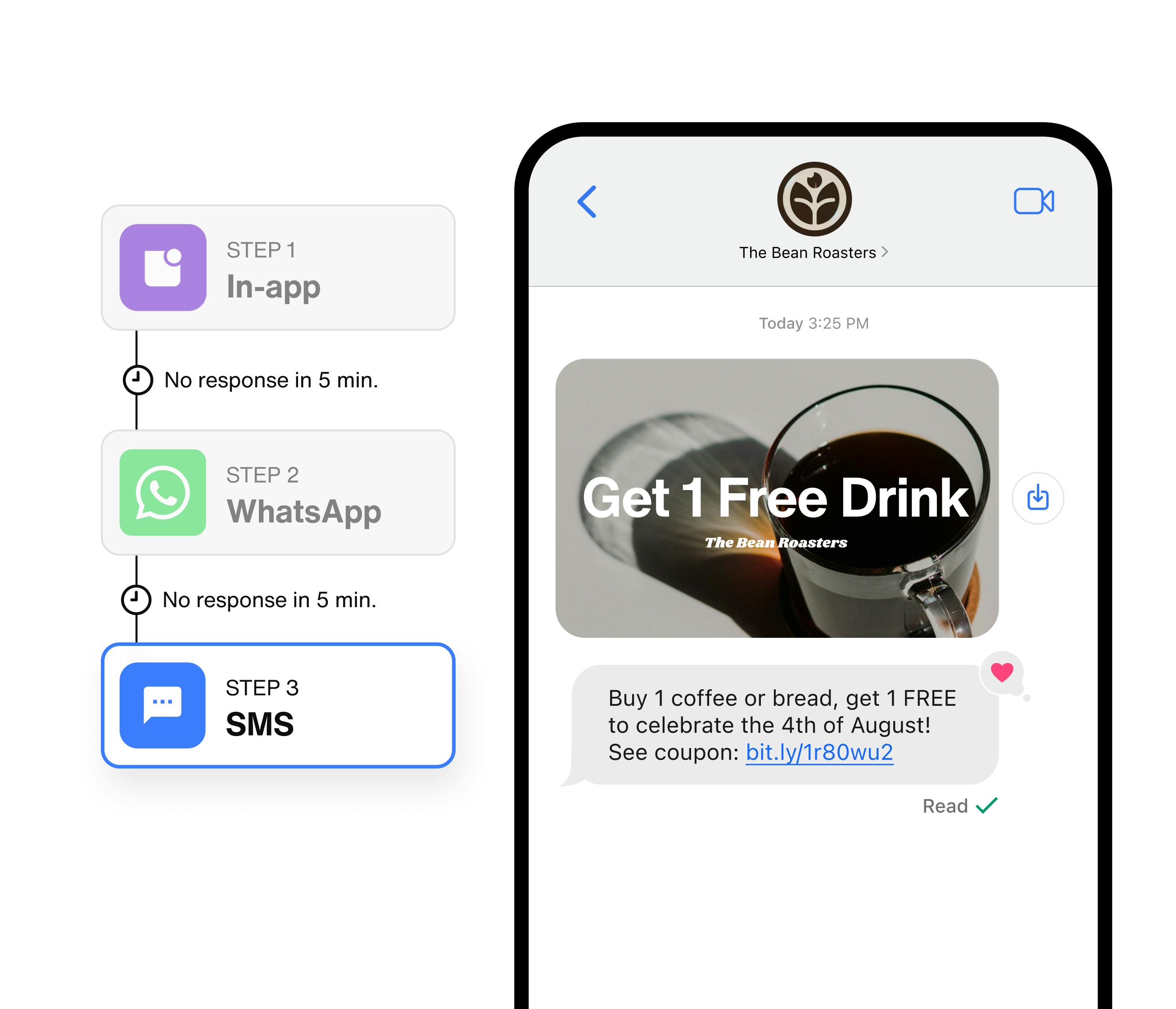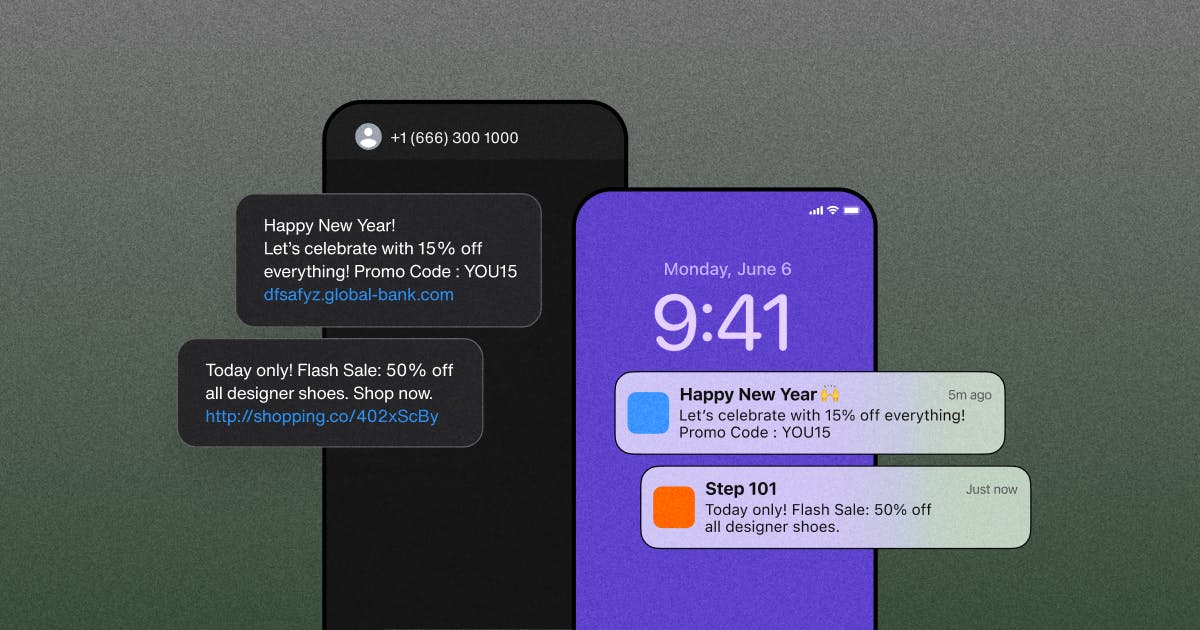Blog
The ultimate guide to in-app notifications
Learn what in-app notifications are, top use cases of in-app notifications, and decide whether you should build or buy in-app notifications.
Empower all your teams with a scalable SMS API service for business notifications.


With high open rates, SMS ensures your messages get on every recipient's mobile phone.

SMS notifications are delivered almost instantly, making them ideal for time-sensitive information and alerts.

SMS engages vast audiences via the telecommunication network, including those without internet access or your app.
Create successful SMS campaigns with personalized messages and precise audience targeting.
Programmable SMS for developers with a robust SMS API service.
Safeguard customer messaging with our secure and compliant SMS API and omnichannel business messaging solution.

Send time-sensitive SMS notifications and account alerts via a reliable SMS API.

Minimize no-shows with SMS reminders sent from your systems using our SMS API.

Deliver SMS marketing messages and promotions to boost leads and sales.

Authenticate users via SMS to block bots and build customer confidence effortlessly.
Streamline SMS API system integration via our highly abstracted omnichannel messaging API and get in-app, WhatsApp, and push notifications messaging channels all at once.
import requests
# Configuration
url = "YOUR_BASE_URL/v2/notifications"
headers = {
"Api-Token": "YOUR_API_TOKEN",
"Content-Type": "application/json"
}
payload = {
"template": {
"key": "sms_template",
"variables": {
"user-1": {"first_name": "Chase", "datetime": "2024/03/18", "appointment_number": "388031"}
}
},
"targets": ["user-1"],
"mode": "realtime"
}
# POST request
response = requests.post(url, json=payload, headers=headers)

Uncover the differences between push notifications vs. SMS. Decide whether to use mobile push notifications or SMS notifications for business messaging.

Learn how to solve the unique communication challenges of gig economy platforms with in-app communications.

Download this ebook to learn more about the innovator’s opportunity in in-app omnichannel communication and how a business messaging tool can empower your team to enhance in-app communication.